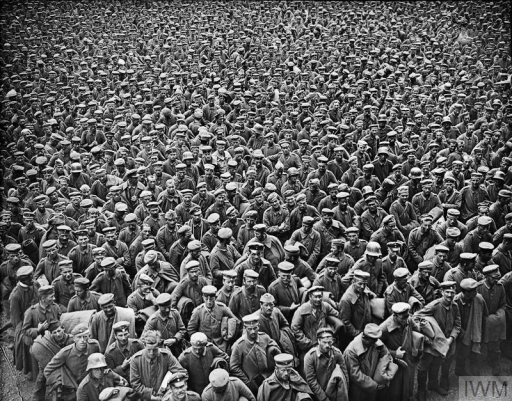The first in a series of Allied offensives culminating in the Armistice that ended the First World War was launched against German positions near the French city of Amiens on 8 August 1918.
Significant advances were achieved on the opening day, notably by Australian and Canadian troops attacking as part of a British-led operation, fought with French support at the point where the Allied armies met on the Western Front.
Secrecy was an essential part of the build-up. Among the ruses, German forces were misled into believing that the Canadian Corps was being moved to Flanders.
As well as artillery, hundreds of tanks and aircraft were used to support the infantry.
Improvements in artillery range-finding avoided the need for a prolonged opening bombardment, and the risk of revealing allied intentions. A ‘creeping barrage’ would cover the advancing ground troops.
The attacks began in fog at 04.20 on the morning of August 8. In places, the pace of events caught the German defenders unawares.
By the end of the first day, a gap of 15 miles (24kms) had been punched in the German lines south of the Somme. The Canadians advanced eight miles (13kms). Around 15,000 German soldiers were taken prisoner – their numbers seen as an clear indication of flagging morale.
General Erich Ludendorff, who’d hoped to achieve victory with his spring offensives on the Western Front, later described August 8 – the start of the Battle of Amiens – as the ‘Black Day of the German Army’.
German resistance did stiffen. But in another departure from previous practice, the Allied armies desisted from pressing on with attacks against strong points, switching their focus elsewhere instead.

CWGC Villers-Bretonneux Military Cemetery, east of Amiens – where some of the Commonwealth soldiers killed at the Battle of Amiens lie (Photo: Centenary News)
The Allied supreme commander, Ferdinand Foch, had signalled his intention to return to the offensive after halting the last German advances of the Great War in July with the Aisne-Marne counter-attack.
There, the American forces whose arrival in ever increasing numbers so alarmed Ludendorff, made a vital contribution. Germany, on the other hand, was running critically short of reserves.
Foch agreed to the British plan for the attack at Amiens as the first in a series of blows against the German army at key points along the Western Front. Together known as the ‘Hundred Days’ offensive, the attacks – running from August-November 1918 – ended with the signing of the Armistice on November 11.
The Battle of Amiens centenary was marked on 8 Aug 2018 with international commemorations at Amiens Cathedral. Read our report from Amiens here.
 Sources: Wikipedia/various
Sources: Wikipedia/various
Images courtesy of Imperial War Musems, © IWM Q 9271; Centenary News (Villers-Bretonneux, Amiens Cathedral)
Posted by: CN Editorial Team
